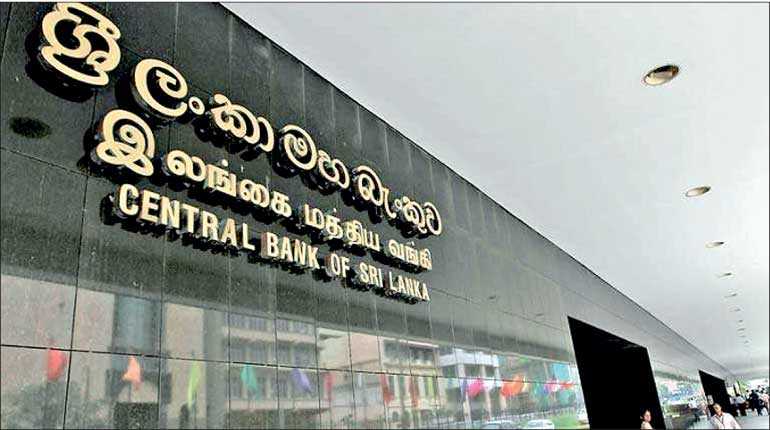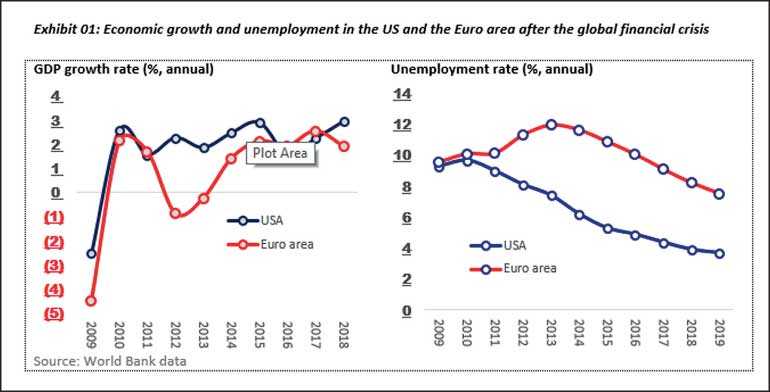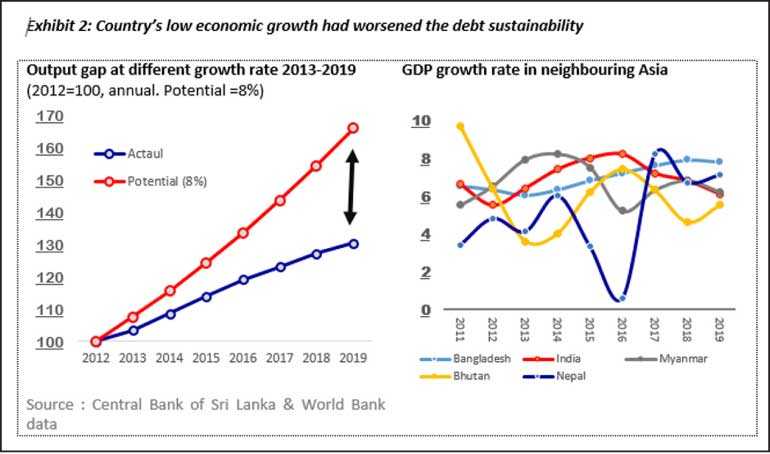Saturday Apr 19, 2025
Saturday Apr 19, 2025
Wednesday, 29 April 2020 02:45 - - {{hitsCtrl.values.hits}}

The world is facing unprecedented economic challenges due to the COVID-19 pandemic. Modern human civilisation has never confronted similar socio economic challenges. Both developed and emerging economies are equally struggling to provide necessary healthcare facilities to save millions of lives, risked due the viral outbreak. The global healthcare system in on the brink of collapse with an ever-increasing number of infected patients on a daily basis. 
The action taken by authorities, ranging from social distancing to complete lockdown, in a bid to control the spread of the viral disease has severely affected the global economy. The growth projections are lowered, however any projection today is simply not reliable due to the unpredictable nature of the viral outbreak and severity of the responses.
Most authorities had though unwillingly adopted painful measures to control the movement of people and goods to the maximum possible extent. As result, the entire production and value chain had got completely distorted. Millions in many economies have lost their jobs and had been asked to stay at home. Lower income level had resulted in curtailing consumption expenditure and restricted ordinary lifestyle. Those actions had led to serious decline in the aggregate demand. World economic growth is nose diving.
The fiscal and monetary authorities have come forward to rescue the economies from looming collapse. A large number of fiscal stimulus of varying degree have been offered. Similarly, leading monetary authorities have offered monetary stimulus to the global financial system. Maintaining a sound financial system is of paramount importance today for the success of battle against the viral outbreak.
The space for fiscal stimulus is limited in many countries. The ability to pump additional fiscal stimulus in terms of Government spending is limited due to lower income collection during the economic slump. The prediction is that the viral spread to be followed by a severe and unprecedented global recession. It is expected that a prolonged and slow recovery can cause sustained economic damages, triggering millions of jobs cuts. The intention of all action by monetary and fiscal authorities is to shorten time for the recovery and make is ‘V’ shape recovery rather than ‘U’ shape.
The Keynesian model whereby government pumps money to the economy through discretionary fiscal spending to ignite the economy in a recessionary condition will work only when there is a coordinated global action under the current globalised world. The effect will be felt differently to different economies depending on their production base and level of production capacity.
Immediate monetary stimulus target to improve the liquidity and maintain the health of global financial system. The key central bank actions to lower the policy lending rates and inject money through purchase of government and private debts, expanding their balance sheets had avoided a possible global financial crisis. While understanding that any stimulus would work only when production and consumption resume to normal condition, the recovery will depend of the effectiveness of the responses.
The examples are plenty in the economic history. The innovative and unorthodox action from the Fed, the central bank of the United States under the chairmanship of renowned economist, Ben Bernanke at the time of 2009 global financial crisis, enabled the US to achieve a decade long sustained recovery and to lift millions around the world out of poverty. Unless the decisive action from the Fed, the US could have fallen to a prolonged Japanese style recession. Then Fed Chair, Ben Bernanke was a crisis-expert and his action, without much supports from his political counterparts helped to avert further economic collapse onset of the financial crisis in 2009. His action was a testimony that an innovative central bank has no bounds. His action was supported by two more central bankers; then Chair of European Central Bank (ECB) Mario Draghi and Governor of Bank of England (BoE) Sir Mervyn King. Thanks to unorthodox monetary actions by these economists the world economy survived and millions of lives around the world achieved economic wellbeing.
Tale of two continents
However, there was a contrasting difference in the approach of the two continents. Euro area adopted severe austerity measures curtailing most of fiscal expenditure. Contrastingly, the US policymakers didn’t adopt such drastic austerity measures while the Fed maintained several rounds of quantitative easing, forcing the banking system to lend to the economy.
Despite no fiscal support, Mario Draghi promised the financial community that the ECB would do whatever could be done to protect the Euro. He kept his promise by going on a massive monetary expansion and extended liquidity injection. As result of these collective actions, both continents survived and returned to growth. The austerity measures dragged down the recovery process and the growth rate in Euro zone while the US was able to rebound at a faster rate.
Richard Koo, former Chief Economist at the Nomura Research Institute, explained in his theory of ‘balance sheet recession’ that an economic recession that occurs when high levels of private sector debt cause individuals or companies to collectively focus on saving by paying down debt rather than spending or investing, causing economic growth to slow or decline. The danger is that the economy can fall into a prolonged recession unless action is taken to prevent such balance sheet recession. The Fed action prevented such balance sheet recession and the US economy recovered from the recession, caused by the financial crisis in 2009 albeit at a slower phase and reached full employment.
Government debt crisis in Sri Lanka
It is well understood that fiscal space in Sri Lanka is limited due to the high debt service commitments falling due every year. The period till 2023 is identified as debt bunching period. This period could be further extended due to the short-term borrowings, especially short tenure USD borrowings such as international syndicated loans and Sri Lanka Development Bonds (SLDB).
The debt sustainability is appraised in two areas; the adequacy of cash inflow to meet the debt commitments and the level of debt in comparison to the GDP. Both these indicators are affected by high level of debt as well as the low level of growth. Analysts mostly attribute to the high level of borrowings, however, the real reason is the low economic growth.
Our economic growth has been subpar during the last seven years (refer to Exhibit 2). When the economy is growing at rate below its potential output, both tax collection (fiscal revenue) and GDP (used as denominator of debt to GDP calculation) drag down, deteriorating the debt sustainability indicators. The ongoing global economic crisis, which emanated due to the COVID-19 pandemic, has worsened the growth outlook and debt sustainability in Sri Lanka.
It is noted that most economists advise the Government of Sri Lanka to stay on prudent fiscal path and everyone should share the pain of the economic crisis. Nevertheless, history provides sufficient examples to those who try to impose austerity at the time of severe contraction of consumption that such action can worsen the crisis.
It also understood that most economic theories (the assumed relationship among the economic variables) work under normal economic condition and the economic crisis of this magnitude distorts such relationships. If the Government and the Central Bank stick to the theory in time of a crisis, the country may lead to a severe economic destruction.
Inflation or price stability is a relatively low threat at the moment as the economy is operating well below its potential output. The central banks have a bigger role during a crisis of this nature. Our Central Bank has taken number of measures to safeguard the financial system and offered liquidity and credit support to ailing economy. However, the effectiveness of such actions could be negligible given the severity of the crisis.
The Central Bank and fiscal authorities are the only institutional setups that can save millions of lives in this crisis prone world. The history suggests that they should adopt out-of-the-box thinking and unorthodox approaches to effectively fight against crisis of this magnitude.


(The writer is a CFA charterholder; capital market specialist and Certified FRM with over 15 years local and international capital market experience. The views and opinions expressed in this article are those of the writer and do not necessarily reflect the official policy or position of any institution.)
Discover Kapruka, the leading online shopping platform in Sri Lanka, where you can conveniently send Gifts and Flowers to your loved ones for any event including Valentine ’s Day. Explore a wide range of popular Shopping Categories on Kapruka, including Toys, Groceries, Electronics, Birthday Cakes, Fruits, Chocolates, Flower Bouquets, Clothing, Watches, Lingerie, Gift Sets and Jewellery. Also if you’re interested in selling with Kapruka, Partner Central by Kapruka is the best solution to start with. Moreover, through Kapruka Global Shop, you can also enjoy the convenience of purchasing products from renowned platforms like Amazon and eBay and have them delivered to Sri Lanka.
Discover Kapruka, the leading online shopping platform in Sri Lanka, where you can conveniently send Gifts and Flowers to your loved ones for any event including Valentine ’s Day. Explore a wide range of popular Shopping Categories on Kapruka, including Toys, Groceries, Electronics, Birthday Cakes, Fruits, Chocolates, Flower Bouquets, Clothing, Watches, Lingerie, Gift Sets and Jewellery. Also if you’re interested in selling with Kapruka, Partner Central by Kapruka is the best solution to start with. Moreover, through Kapruka Global Shop, you can also enjoy the convenience of purchasing products from renowned platforms like Amazon and eBay and have them delivered to Sri Lanka.